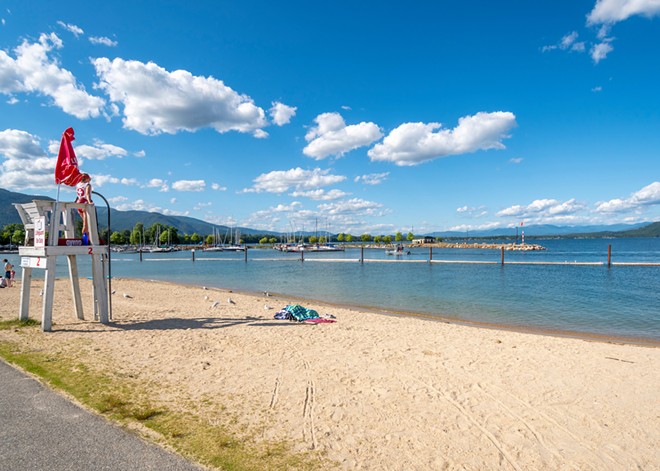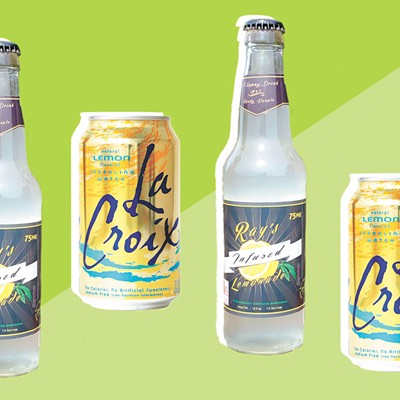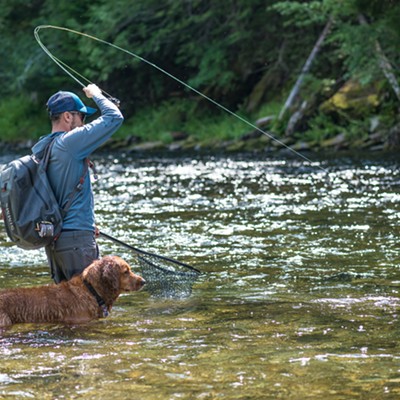
Summer brings blue skies, sunshine and long, lazy days at the lake or neighborhood pool.
Enjoying all that day after day means protecting our skin from burning to a crisp. So, we flock to the aisles of sunscreen where we stare, bewildered at all the options. Different SPF ratings, creams, aerosols, powders, and countless brands and other options to choose from. It can be overwhelming.
But every time I'm tempted to forgo sunscreen I'm haunted with visions of my worst sunburn. I sat under the hot sun, baking for hours on the front of a catamaran. My precarious trip to my chosen spot convinced me that if I moved again, I'd wind up overboard in the ocean with dozens of witnesses.
The sunburn was in the usual spots, and on my scalp (where my hair parted) and the skin behind my eyebrows. During the following days I had enough flaking skin to make it look like I was caught in a sudden, summer snowstorm.
Sorry, You Must Reapply
According to Dr. William Philip Werschler of the Spokane Dermatology Clinic, like many people I made the common mistake of not reapplying my sunscreen.
"So, we have chemical sunscreens [and] physical sunblocks," Werschler says.
Chemical sunscreens contain ingredients that soak into your skin and absorb the UV rays. They act like a filter but can only absorb so much before needing a recharge.
Physical sunblocks, also known as mineral sunscreens, "create like a shield on the skin to reflect and refract ultraviolet light," Werschler says. Holes are eventually made in the mineral sunblock from swimming and sweating.
Werschler recommends applying a sunscreen in the morning, and reapplying every two to three hours afterward if you're out enjoying the sun.
"It's better to use either one than not to use one," Werschler says. Both chemical and mineral sunscreens protect you from UVB rays, the cause of sunburns and skin cancer, and UVA rays which cause wrinkles and aging skin.
"You have the burning rays, you have the aging rays and the sunblocks [mineral sunscreens] generally do a better job at a more full spectrum block. Depending on the chemicals in the formulation of a chemical sunscreen, they can do just as good a job," Werschler says.
If you select a sunscreen labeled "broad-spectrum protection" you're covered for UVA and UVB sun rays.
What's In It?
Concerns about chemical sunscreens are real. There are research studies (some conducted on animals) that show elements in chemical sunscreens can enter the bloodstream after it's saturated the skin. Oxybenzone, found in some chemical sunscreens, may contribute to hormone disruption and boost the possibility of certain cancers.
— Keep in mind that sunscreens expire so don't use them past the expiration date.
— Tanning oils are not sunscreen (oil actually focuses light onto your skin).
— Taking some medications can make you more sensitive to sunlight.
— Aerosol sunscreens will make any skin cuts sting and can also affect gel nails and dyed hair.
— Having a base tan from a tanning bed won't save you from a burn.
— Carrie ShriverAs a result, while the FDA considers titanium dioxide and zinc oxide (found in mineral sunscreens) safe and effective, it states there isn't enough data about the chemicals in sunscreens for the same conclusion.
In addition, chemical sunscreens are toxic to sea life, such as coral, fish and even the algae that is a key food element. Most mineral options are safe for aquatic life but choosing one labeled "non-nano" ensures that the particles in the sunscreen are too large for coral to ingest.
Another possible environmental concern is from using aerosol sunscreens. The propellants in them contribute to global warming, and they also emit volatile organic compounds (VOCs) which add to the pollution in ground-level ozones.
Werschler recommends checking sunscreen recommendations on the website of the Environmental Working Group. This nonprofit, nonpartisan organization performs independent safety analysis and lists updates about sunscreens on their website ewg.org. The Environmental Working Group verifies 83 sunscreens, all of them mineral based.
For thousands of years people have used zinc oxide as a skin protector. Zelda Swain, a dermatology nurse practitioner and owner of the medical spa, Bloom Aesthetics by Zelda, recommends "a sunscreen with a substantial amount of zinc oxide in it, 5% or more."
The physical sunblocks (mineral sunscreens) have other positive attributes. They tend to last longer, the zinc in them can zap those zits, they're usually easy on sensitive skin and don't tend to trigger allergies.
Sunscreen vs. Sunblock
What's the Difference?
— Chemical sunscreens contain ingredients that soak into your skin and absorb the UV rays.
— Physical sunblocks contain minerals that shield the skin surface by reflecting light.
"Theoretically you shouldn't be allergic to mineral sunscreens because they are inert particles. What happens is those particles don't exist in isolation, they're in a compound with all kinds of other stuff like fragrances, preservatives, carriers and emulsifiers," Werschler says, and those other ingredients can set off your allergies.
On the minus side, mineral sunscreens can leave a chalky white residue on your skin and make you look like a vampire in photos. Luckily, avoiding resembling the un-dead is possible.
"I think the variety of sunscreens that feel good and look good has really taken off," Swain says. "We have several that have a tint to them, warm or cool. Then there's one that has a skin tone match, it goes on white and then it turns [tinted] as it's heated up by your skin. So, there's a huge variety of ones to make you not look like the surfers did in the 80s."
Know Your Numbers
And last, consider the sun protective factor (SPF) when choosing a sunscreen. The number signifies how much ultraviolet light is absorbed when you're wearing it. The SPF rating system is weird, confusing and makes my head hurt. So, the best advice on this subject to remember is:
"An SPF of 30 is marginally better than a 15, but it's not twice as good," Werschler says. "You have to add a lot more SPF protection [after 30] to get incrementally more absorbed."
It's actually pretty simple. "Grab some sunscreen and make sure everybody has some on, reapply every two to three hours and have fun in the sun," Werschler says.
Protecting Skin Starts Early
For babies, newborn to 18 months, time in the sun should be minimal. They can get overheated and dehydrated.
Once that toddler is up and running around outside they need skin protection. "Practice safe sun. That's sunglasses, the hat [and sunscreen]," says Spokane dermatologist William Philip Werschler.
Children's sunscreen is formulated to avoid stinging. You can use adult products on kids, especially if that's all you have with you at the time. "If you look at the alternative of not using sunscreen, well that's much worse," Werschler says. "But remember if they get it in their eyes [they're] not going to be a very happy camper."
When taking your kids outside don't make wearing sunscreen optional, make it part of your routine, Werschler advises.
Since children love having fun, turn the whole process into a game. "I would jokingly act almost like a drill sergeant," he says. Werschler told his kids to "Assume the position!" and they'd spread out their arms and legs. He'd spray them down, minus their faces, have them rotate and repeat the procedure. Afterward the kids would rub sunscreen on their own face.























